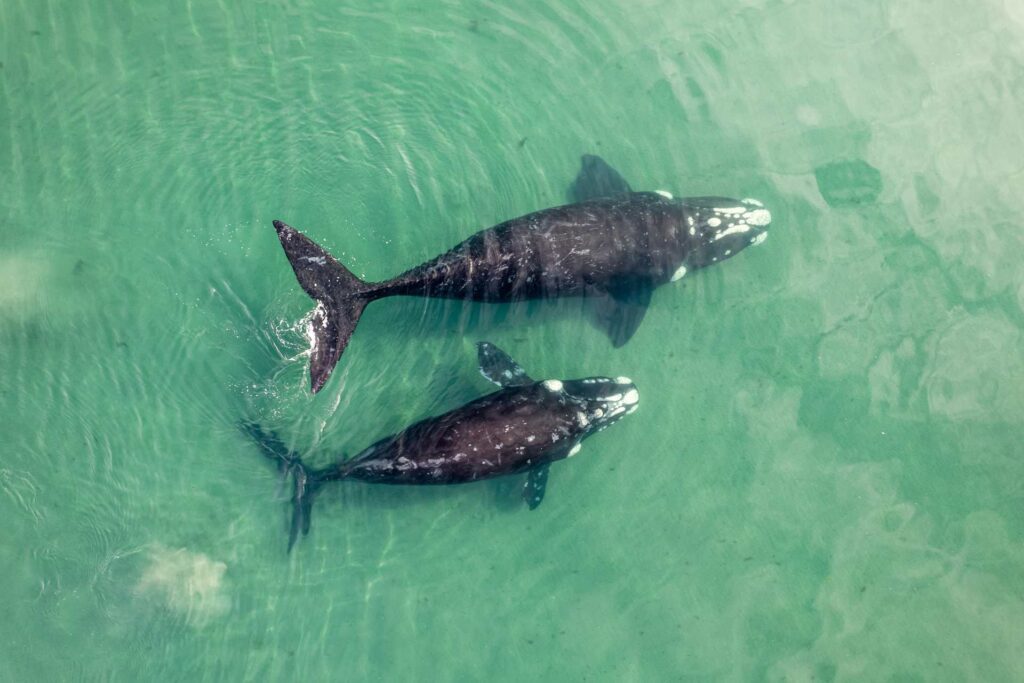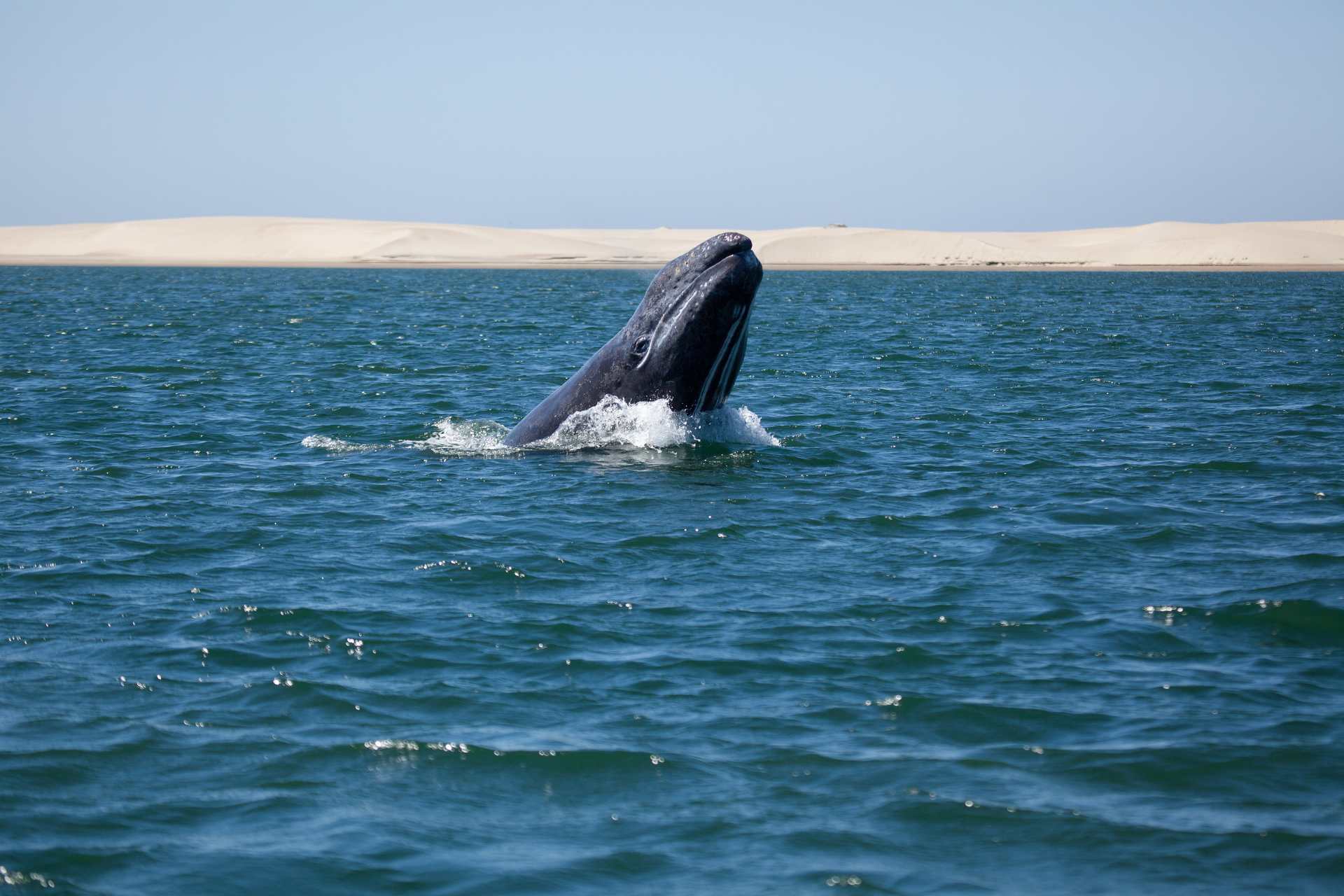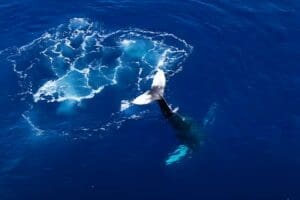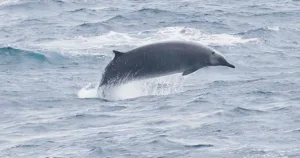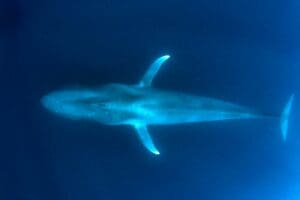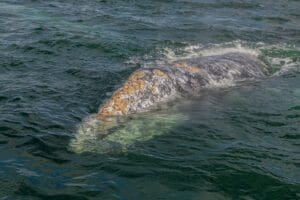The Enigmatic Voyage of the Gray Whale
As the gray whale embarks on its remarkable aquatic marathon, spanning vast oceanic expanses from feeding grounds to breeding havens, you’ll find yourself captivated by the resilience and wonders of these gentle giants. Join the voyage to trace the paths these magnificent creatures carve through the sea, revealing the intricate tapestry of marine life and the ecological marvels beneath the waves.
Facts first
Current Population: Estimates vary, but there are approximately 20,000 to 22,000 gray whales in the Eastern North Pacific population. The exact number is subject to change due to various factors, including environmental conditions.
Extinction Certain Regions: Gray whales are extinct in the North Atlantic, likely due to extensive whaling activities in the 18th century. The Pacific populations have survived and are the focus of current conservation efforts.
Size Comparison: Gray whales typically measure up to 49 feet (15 meters) in length, making them significantly smaller than the blue whale, which can reach lengths of up to 100 feet (30 meters).
Behavior Towards Humans: Gray whales are often noted for their curiosity towards boats and humans. They have been observed approaching and interacting with whale-watching vessels, though their behavior can vary and should always be approached with caution.
Rarity: The gray whale is not considered a rare species, particularly the Eastern North Pacific population. They are regularly observed, especially along their migration routes, such as the coast of Baja California in Mexico.
Conservation Status: While not on the brink of extinction, gray whales are listed as a conservation-dependent species. This means they require ongoing protection measures to prevent them from becoming endangered or extinct, primarily due to past whaling practices and current threats like habitat degradation and climate change.
The Epic Migration
Understanding Gray Whale Migration Patterns
Every year, you witness one of nature’s most awe-inspiring spectacles: the migration of the gray whale. These majestic creatures undertake a long journey between their feeding grounds in the cold Arctic seas and their breeding lagoons in the warm waters off Mexico’s Baja California Peninsula. You’ve probably heard about this epic journey that can stretch up to 12,000 miles round trip, an endurance challenge that gray whales embrace with a determination that’s nothing short of remarkable.
Seasonal Movements and Routes
As the seasons change, so do the movements of the gray whale. You can imagine these whales heading south from their frosty feeding grounds in late fall, navigating along the North American coast with an intrinsic compass that guides them toward their warmer sanctuaries. Come spring, they reverse their path, returning to the rich, food-laden waters of the Arctic. Their coastal route is a path worn by generations, a marine corridor passed down through millennia.
Record-Holding Distances
Holding the title for one of the longest migrations among mammals, gray whales are the marathon swimmers of the ocean. Their travel log is impressive, with individual whales covering thousands of miles in one trip. These distances aren’t just numbers—they represent a host of challenges and marvels, from the endurance of the whales to the ecological connections between remote habitats. You can’t help but be amazed by their journey.
Evolutionary Origins of the Gray Whale
Prehistoric Beginnings
Peer back into the depths of time, and you’ll encounter the ancestors of today’s gray whale—a lineage as ancient as the rolling hills. Originating tens of millions of years ago, these creatures have a storied past that intertwines with the very evolution of Earth’s marine ecosystems. From their primitive origins, they’ve traversed epochs, adapting and evolving to survive as the world around them changed.
Adaptations Over Millennia
Over the course of millennia, your gray whale ancestors went through a series of impressive adaptations. These changes were incremental, with natural selection favoring traits that enabled them to thrive in their shifting aquatic world. From the refining of their baleen plates, which filter food from the water to the streamlining of their bodies for efficient long-distance travel, every adaptation was a stepping-stone toward the gray whale you recognize today.
From Land to Sea: The Evolutionary Journey
It’s hard to picture, but the predecessors to modern whales once roamed the land. Your gray whale’s evolutionary journey saw it transition from a land-based mammal to the ocean-dwelling giant you are familiar with. This transformation entailed dramatic bodily reconfigurations: limbs morphing into flippers, the development of a tail fluke, and physiology refined for life in the sea. This incredible shift exemplifies the adaptive prowess of the gray whale lineage.
Physical Characteristics of Gray Whales
Size and Appearance
Take a moment to appreciate the sheer size of the gray whale. Growing up to 49 feet in length and weighing as much as 40 tons, they are true behemoths of the sea. Their skin, mottled gray in color, is often barnacle-encrusted, bearing the marks of age and experience. The whale’s robust yet streamlined body, complete with a distinctive hump and a series of knuckles along its back, makes it an unmistakable presence in the ocean.
Unique Features
Among the unique features of gray whales is their baleen—a filtration system that’s essential for their survival. Instead of teeth, they have baleen plates that streamline the process of scooping and sifting small prey from the ocean floor. Another intriguing characteristic is their lack of a dorsal fin, which sets them apart from many other whale species.
Comparisons with Other Whale Species
When compared to other members of the cetacean family, gray whales stand out for their feeding strategies and migration habits. Their bottom-feeding behavior is quite different from the feeding techniques of humpback or blue whales, which often involve lunge feeding on schools of fish or krill. Size-wise, they are smaller than blue whales yet larger than many dolphins and porpoises, fitting into a unique niche within the vast tapestry of marine life.
Behavioral Patterns
Social Structure and Communication
The social life of a gray whale might seem a little solitary compared to other cetaceans. Typically, gray whales travel alone or in small, transient groups. During migration and in their breeding grounds, however, they can become quite social creatures. Your understanding of their communication is constantly evolving, with research unveiling a repertoire of calls and sounds used to interact with each other.
Feeding Habits
Gray whales are opportunistic feeders and have a pretty unconventional menu. You would find them rolling in the sandy ocean floor, scooping up sediment, and filtering out their preferred diet of amphipods and other invertebrates. This benthic feeding distinguishes them from other filter feeders and supports an important ecological role in their habitat.
Breaching and Other Surface Behaviors
Have you ever come across images of gray whales breaching? When whales propel themselves out of the water, this spectacular behavior is not fully understood. It could be a form of communication, a way to dislodge parasites, or simply a playful gesture. Along with breaching, they spy hop, rising vertically out of the water to observe their surroundings, and lobtail, slapping their flukes against the water, possibly to communicate.
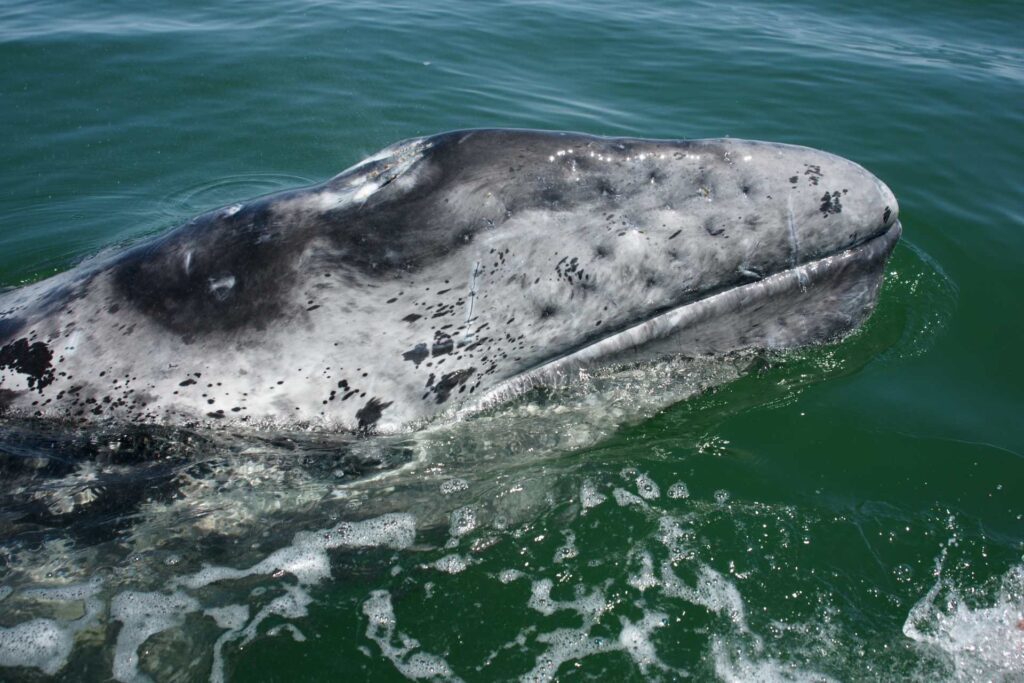
Reproductive Cycle
Mating Rituals
During the breeding season, gray whale courtship can be quite the spectacle. Mating rituals often involve complex interactions between multiple whales and can be a gentle and synchronized ballet. While mating behaviors are not fully understood, these rituals are crucial for the species’ continuation.
Gestation Period and Birth
The gestation period for a gray whale is about 13 to 14 months, culminating in the birth of a single calf in the warm waters of the breeding lagoons. The choice of these sheltered waters ensures the safety and comfort of the newborn and its mother during this vulnerable time.
Mother-Calf Bonding
Post-birth, the bond between mother and calf is one of the most touching aspects of gray whale life. Calves are dependent on their mothers for milk and protection for about six to eight months. During this time, the calf learns critical survival skills and builds up strength for the long migration ahead. The nurturing and teaching from the mother set the calf up for a life at sea.
Challenges on the Journey
Predators of the Gray Whale
On their epic migration, gray whales face natural threats from oceanic predators. The most formidable of these is the killer whale or orca. With strategic hunting techniques, orcas are known to target young calves or weaker adults during migration, a stark reminder of the perils gray whales face in the natural world.
Human-Induced Threats
Beyond natural predators, human activities pose significant risks to the gray whale. Ship strikes, entanglement in fishing gear, and habitat degradation from pollution and climate change are pressing concerns. The influence of humanity on the oceans is pervasive, and your actions have the power to tip the balance positively or negatively for these ancient mariners.
Navigating Changing Oceans
The resilience of the gray whale is being tested by the rapidly changing condition of the oceans. Acidification, rising temperatures, and shifting prey availability are transforming their marine environment. As they navigate these changes, the adaptability that has seen them through millennia will be crucial for their continued survival.
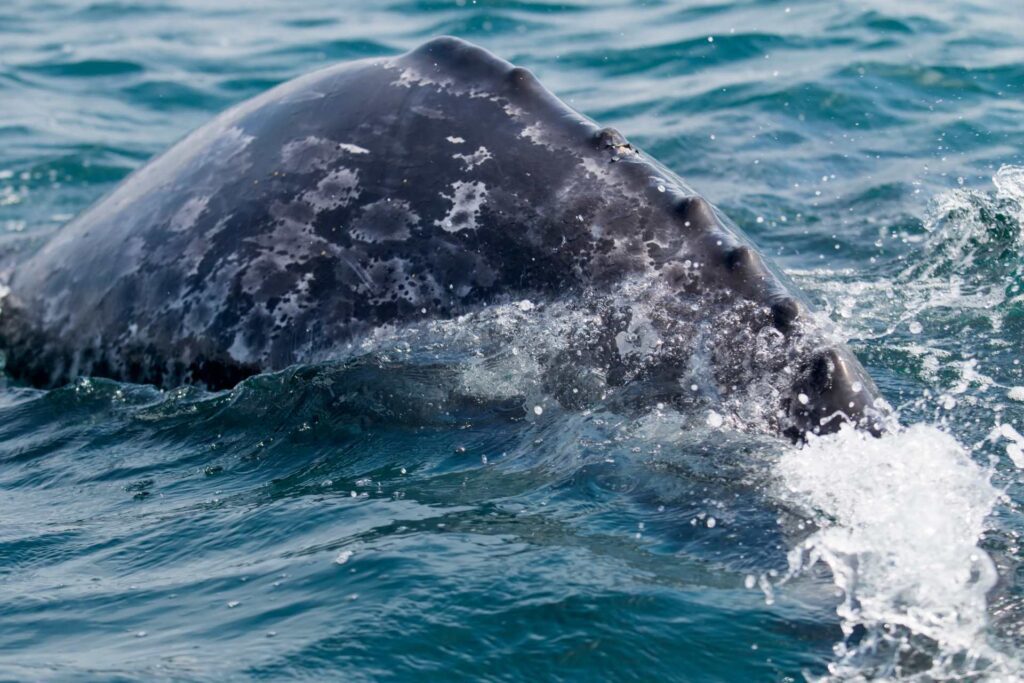
Conservation Efforts
Historical Exploitation
The history of gray whales includes a dark chapter of over-exploitation by commercial whaling, which once brought them to the brink of extinction. Thankfully, the pleas and actions of conservationists around the world painted a new future—one in which these whales could recover.
Protection Under International Law
Today, gray whales enjoy the protection of international law, including the Marine Mammal Protection Act and the International Whaling Commission’s regulations. These legal frameworks have been instrumental in conserving gray whale populations and ensuring that the species continues to grace the oceans.
Current Conservation Status
The conservation status of the gray whale is an ongoing focus for marine biologists and environmentalists. While they are no longer considered endangered, constant vigilance is key to maintaining their population. Conservation efforts continue to adapt in response to new challenges and findings, demonstrating humanity’s commitment to preserving these creatures.
Cultural Significance
Indigenous Peoples and the Gray Whale
Indigenous communities along the migration routes of gray whales have an enduring connection with these animals. This relationship is steeped in respect and formed the basis of cultural narratives, customs, and sustenance practices. Recognizing and honoring this longstanding bond is critical in the shared stewardship of the gray whale.
Gray Whales in Myth and Folklore
Gray whales hold a mythical status in various cultures, often revered as totems or featured in folklore. These stories and legends reflect the profound impact that gray whales have had on human imagination and spirituality, as symbols of wisdom, transformation, and the might of the natural world.
Eco-Tourism and Whale Watching
Whale watching has become a popular form of eco-tourism, offering you a chance to witness gray whales in their natural habitat. This industry brings awareness to the species and encourages conservation but must be managed responsibly to avoid undue stress on the animals.
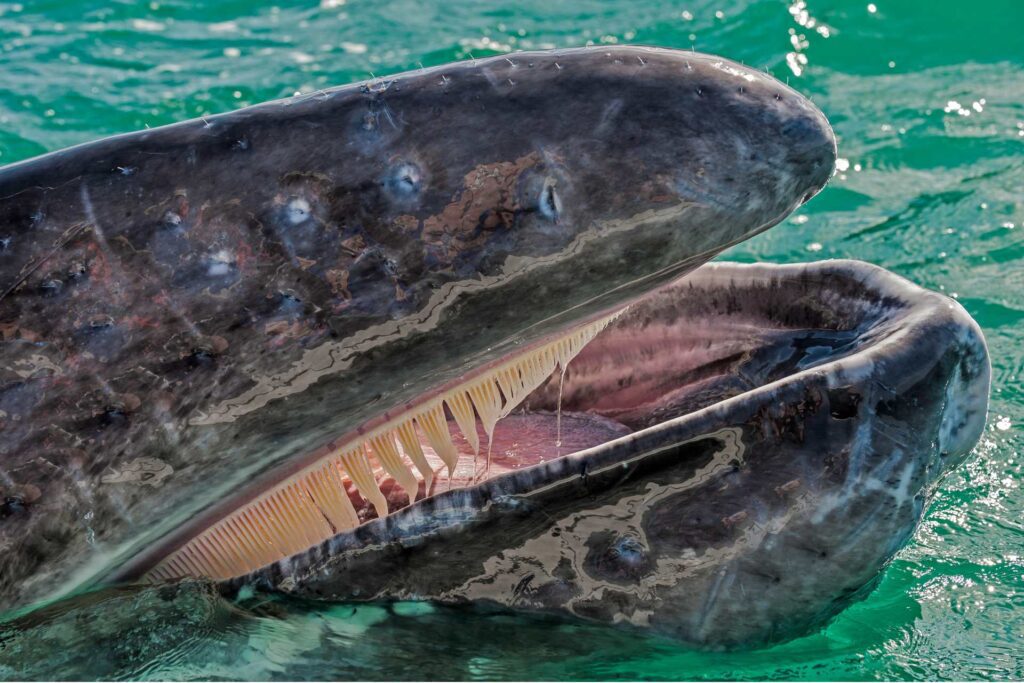
Scientific Research and Study
Tagging and Tracking
To unravel the mysteries of the gray whale journey and life cycle, scientists employ methods such as tagging and tracking. These technologies provide invaluable data on migration patterns, behavior, and social structures, deepening your understanding of these creatures.
Understanding Whale Communication
The underwater world of whale communication is a subject of fascination. By studying the vocalizations of gray whales, researchers hope to decode the context and content of their calls, revealing the complexities of their interactions.
Breeding and Birth Observations
Observing gray whale breeding and birth in their natural habitats presents opportunities and challenges. Such studies can lead to better protection during these critical life stages and give insights into the health of populations.
The Future
Projected Population Trends
As you look to the future, projecting population trends for gray whales is a complex process influenced by ecological variables, conservation measures, and changing global climates. Continued monitoring and research are crucial for understanding and supporting future populations.
Emerging Threats
New threats, such as ocean noise pollution, climate change impacts, and changes in prey availability, could inevitably affect gray whales. You must remain alert to these emerging issues and adaptable in the approach to conservation.
Conservation Strategies Moving Forward
Ensuring a future for gray whales requires a dynamic approach to conservation involving international collaboration, research, and public engagement. It’s necessary to build upon past successes, learn from the challenges faced, and forge a sustainable path that allows gray whales to continue their mysterious journeys for generations to come [1].
